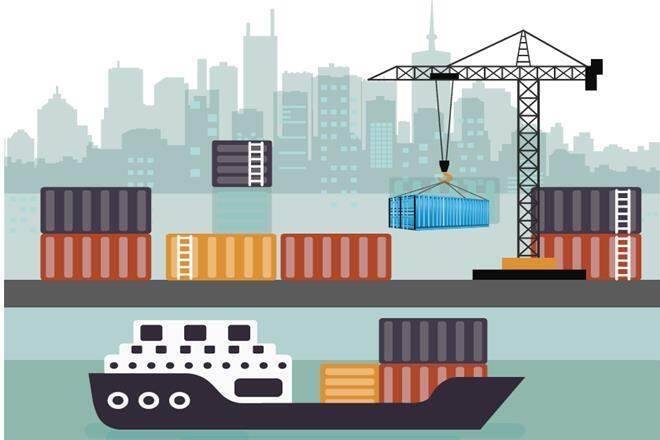While all businesses suffered in some way, small, independent restaurants felt the full force of Covid-19. As they were forced to temporarily close their doors to indoor dining amidst multiple lockdowns, we saw a massive boom in remote food ordering and restaurant delivery right across Europe, as they sought new ways to get their food to customers.
Three years on, this new income stream is showing no signs of abating, with online food delivery in Europe predicted to reach a market value of roughly €54.7 billion by 2027. Even with a return to full dining rooms, restaurants have had to continue pushing strong delivery offers to remain competitive. This is all the more important as they grapple with inflation, stretched supply chains, and a cost of living crisis.
Consumers now operate within an increasingly digital economy, and as such, businesses need to prioritise an online presence, while integrating technology solutions to streamline processes, to guarantee success.
Indeed, for the majority of households, online deliveries are the new normal – whether that be for the weekly food shop or wardrobe essentials, not forgetting the treat of a takeaway. We are witnessing a fundamental shift in consumer behaviour, which warrants a robust response.
In order to survive long-term, small and medium enterprises (SMEs) must look to future-proof their businesses by building resilient and sustainable delivery systems that connect them with their customers. Continued adaptability will be crucial. Each small change represents an opportunity for growth, opening up new avenues for a business to thrive.
Integrating technology to maintain customer relationships
There can be no question that consumer expectations are on the rise. They are pushing for enhanced delivery options, ones that balance speed and cost. SMEs must respond to this, not least because, particularly in the restaurant industry, delivery services are a key link between the business and the customer.
They form a critical part of the overall customer experience. However, it can often be overwhelming for business owners to settle upon the delivery option that is right for their needs, something that we have explored in our latest Food Guide.
In an ever more competitive environment, building a loyal customer base is imperative for business survival. While outsourcing order and delivery to a food aggregator platform may seem like a cost and time effective solution, it can be hard to keep track of multiple online and in-house orders coming into the kitchen at once on several different devices.
Because if a restaurant has signed up to one food marketplace, they’ve likely signed up to several. Seeing this gap in the market, new technology players, including Deliverect and Otter, have emerged with the aim of streamlining online orders via one tablet.
While these online order aggregators go some way to easing the burden, it still doesn’t enable restaurants to guarantee the process or troubleshoot issues, should any arise. And bad deliveries reflect badly on the business.
According to Deliverect, an overwhelming majority of customers (80%) will blame the restaurant, not the delivery service, if their food arrives cold or late. Ultimately, the delivery experience is intrinsically linked to customer retention.
Despite being aware of the reputational risk, building their own delivery capability from scratch is simply not an option for many businesses. It necessitates a large up-front investment, recruiting, training and contracting couriers, buying vehicles and building the in-house systems and infrastructure from the ground up.
Leveraging delivery partners needn’t mean relinquishing control though. With a third-party logistics partner, such as Stuart, restaurants can tap into a roster of couriers while maintaining the relationship with the customer. There is also the added benefit of pooling orders, paying for delivery only once and thus, boosting the bottom-line when it comes to profits.
Building sustainable supply chains
The explosion of e-commerce and last-mile delivery services means that urban logistics is at a critical turning point. The delivery landscape has embraced technology and automation, replacing aging infrastructures and motorised fleets, with flexible, customer-focused solutions. Outdated models have been upgraded to custom delivery options, including same-day and next-day, to meet the heightened expectations of consumers.
However, punctual deliveries are no longer enough to appease. Recent research from Stuart showed that almost a third (30%) of business representatives believe their customers want more sustainable options for deliveries. Consumers are aligning their values with their purchasing power, representing a significant gap for small businesses to meet the environmental delivery practices their consumers are increasingly demanded.
This represents yet another challenge for small businesses, not least because consumers are not necessarily willing to pay a premium. The landscape is changing for the better though. Improved technology is becoming more accessible, and many delivery companies are now pivoting to more sustainable models.
Investing in green solutions and innovations now will shore up businesses for the long term. As businesses look to decarbonise their supply chains, they must choose a delivery model that works for the unique needs of their business, improving efficiency as well as net zero targets.
Unlocking benefits for small businesses
SMEs are the backbone of local economies. According to the World Bank, SMEs represent about 90% of businesses, providing more than 50% of employment. This makes them key to building a thriving global economy and their survival is dependent on a hybrid approach to delivery.
Unlike large multinationals, these smaller businesses don’t have the same resources to cope with sudden market shocks, such as a pandemic or recession. Instead, they must evolve in tune to the changing preferences of consumers, with a keen eye on where the market is heading to ensure they remain on the front foot.
There is no one-size-fits-all approach. Any SMEs looking to harness the benefits of last-mile delivery must consider the long game, remaining realistic about what they require from a specific service. It is those organisations that manage to balance the needs of the present with the demands of the future that will reap the benefits.









